Two months ago I wrote about the wildlife found in my mother’s villa near Malaga, Spain. This month, I returned to Spain but found that August was too hot and dry for much wildlife to flourish. This was in stark contrast to my visit in May when the more temperate and relatively wetter climate seemed to attract an overall abundance of wildlife. Indeed, I find spring to be the best time of year in which to observe most wildlife and lizards are no exception. It is between March and May that lizards are likely to be distracted by breeding activity and can be more tolerant of being observed. Also at this time of year ‘spring showers’ provide good reptile spotting conditions as the rain causes a rapid drop in temperature, during which reptiles retreat into the undergrowth, followed by sunshine during which they bask to warm up again.
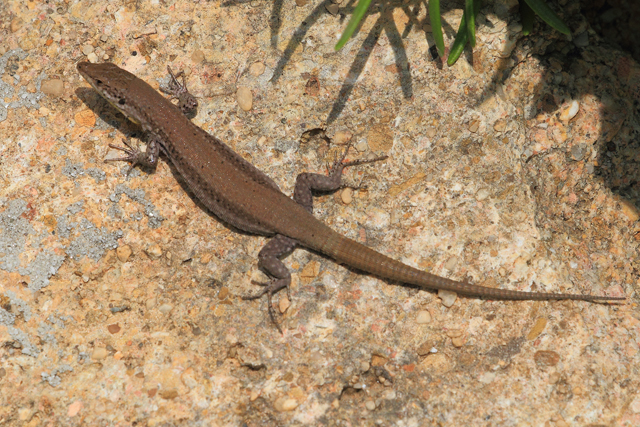
Basking in the sun while also absorbing heat from the sun-warmed rocks. The nearby vegetation provides shade and welcome shelter.
The process of thermoregulation governs the lizard’s response to weather. All reptiles need to reach a specific body temperature to be fully active – usually between 25 and 30C. Body temperature is raised primarily by basking in the sun, and species like the Iberian Wall Lizard will actually flatten their bodies in order to present a larger surface area to the rays of the sun. As well as basking, a reptile can also obtain the heat it needs from a source of retained heat, such as sun-warmed rocks or logs, or by sheltering under a surface that has been similarly warmed by the sun. In hot Mediterranean climates it can often get too hot with temperatures rising well above 30C. In such conditions lizards will look for the shade of vegetation or niches and cracks that can provide shelter from the scorching sun. So once an individual has reached its necessary body temperature it will set off to hunt for food or to look for a mate. If, during these activities, body heat is lost, i.e. as a result of spending too much time in the shade, the animal will need to bask again to retain any lost body heat. The longer a reptile basks, the easier it is to observe and photograph.
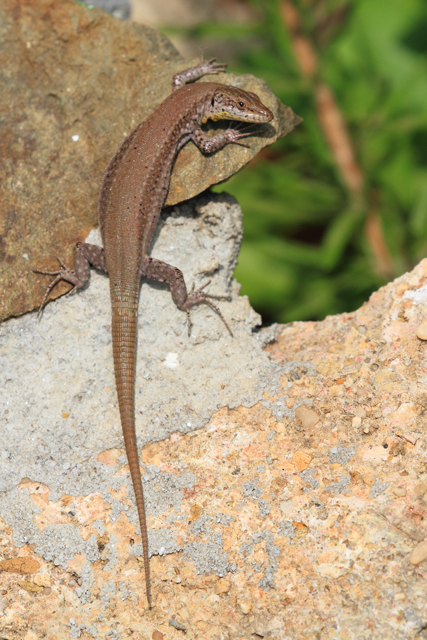
This impressive fully grown specimen poses on the rocky terrain, an ideal habitat for its climbing prowess.
Iberian Wall Lizards, referred to in Spain as Lagartija, are slightly larger than the Common Lizards found in Great Britain. They can be different in size and colouring across their range. They are a fairly small, slender, somewhat flattened species with a tail twice as long as their body. The background colour is usually grey or brown but is occasionally greenish. Most individuals have three narrow longitudinal stripes, one along the spine and the other two more distinct and on either side. Sometimes these are broken up into a series of streaks or marks. Some males instead have a netlike pattern and others are more uniform in colour. The throat is pale with a scattering of small spots, particularly near the sides, and the belly is usually whitish but may be pink, orange, red or buff. Young lizards like the ones pictured below may have blue or green tails.



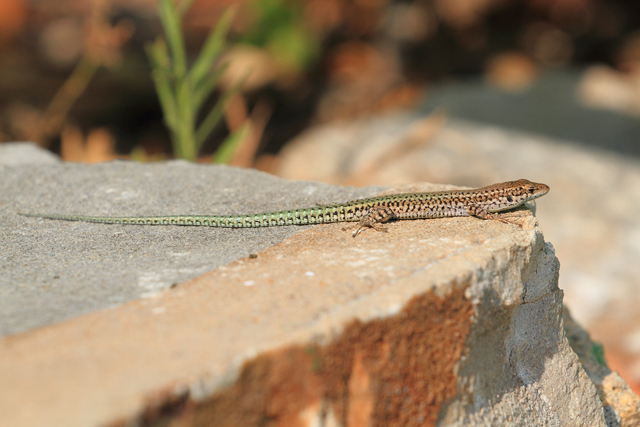
Young lizards with characteristic blue/green tail
These attractive little lizards are common throughout the whole of Spain and can be divided into the following sub species:
Podarcis Hispanicus – south-eastern Spain
Podarcis liolepis – north-eastern Spain
Podarcis guadarramae – north and mid western Spain
Podarcis virescens – mid-western Spain
Podarcis carbonelli – mid-eastern Spain (close to Portuguese border)
Podarcis vaucheri – Andalucia
It would appear that these lizards have evolved from one common ancestor and developed to several species, which have occupied different ecological niches throughout Spain. There are ground dwellers, granite rock specialists and all rounders.
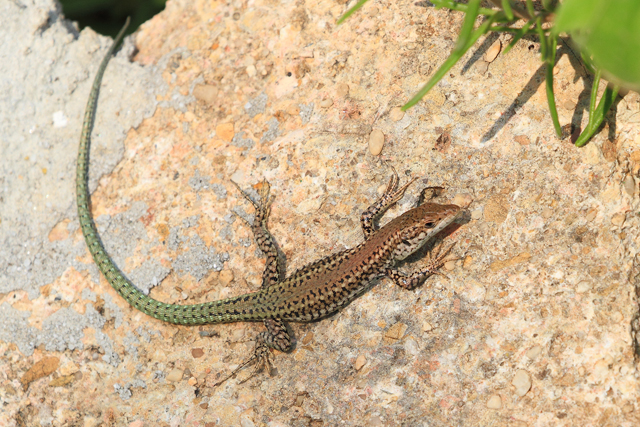
Fairly small, slender, somewhat flattened species with a tail twice as long as their body.
The lizards found were Podcaris vaucheri (Andalucian Wall Lizards) although it’s not out of the question that Polaris hispanicus may have ventured or even inter-bred with vaucheri to provide a variation of the species. Accurate identification may therefore be tricky and interbreeding cannot be excluded. To complicate matters even further, the species are quite variable in pattern and it’s fair to state that these lizards just don’t care what they are expected to look like!
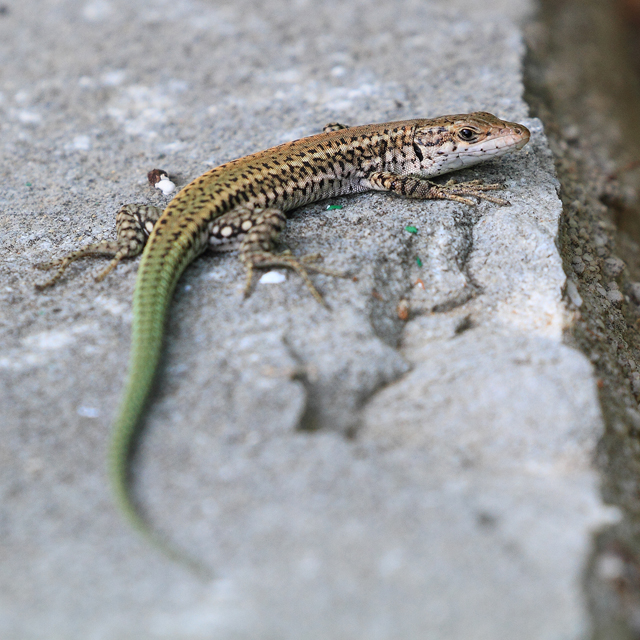
They are constantly alert and will quickly dart for cover when approached.
As a generalist, Podcaris vaucheri is a climbing lizard, populating a wide range of habitats. It occurs from sea level (Cádiz) to over 2000m (Sierra Nevada). I had frequent sightings of them in my mother’s garden as well as when out and about. They vary in appearance according to age, gender and the season; males generally are more strongly coloured and patterned than females, and become more brightly coloured in the breeding season.
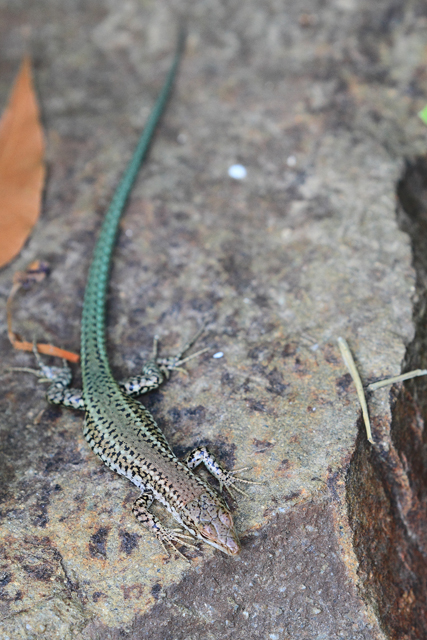
An attractive species that is both brightly coloured and patterned.
The lizards came out in the morning and evening when it was warm but not too hot (bearing in mind that August temperatures can reach 40 degrees!). They like to spend time basking in the sun, particularly on sunny mornings in the cooler months, but they are constantly alert and quickly dart for cover when approached. A long focal length lens, such as my Canon 100-400mm MK2 was ideal as I could get near macro like images at 300/400mm within three feet of the subject. Similar images with my 150mm macro lens would have necessitated being 1ft away, which would probably have scared the lizards off.
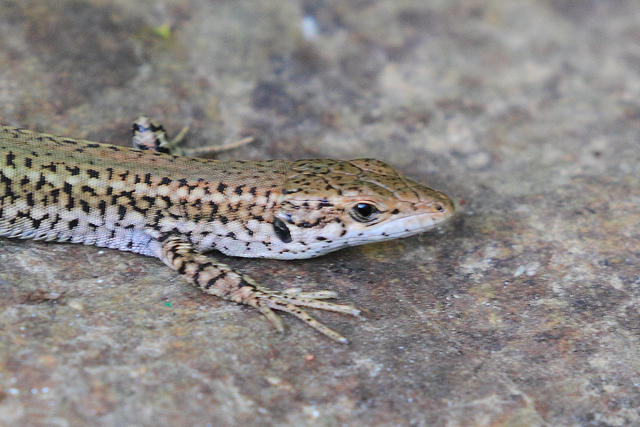
Some males have a netlike pattern and others are more uniform in colour.
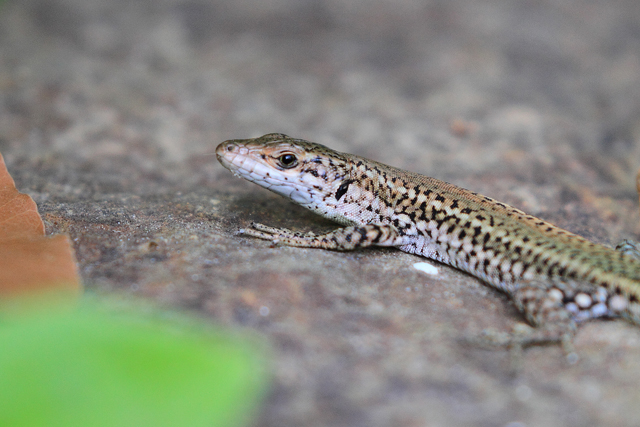
I caught sight of them as they skittered rapidly over the ground between hiding places when they were out hunting. They are excellent climbers too and could be seen climbing walls as well as tree trunks and through branches, where they were superbly camouflaged. I was privileged to have some fascinating views of the lizards. I spotted an attractive male that seemed content basking in the evening sun while alert to any movement from potential predator or prey. As I got closer to him he suddenly climbed up onto the paving, hunching up his back and raising his body off the floor, keeping his eyes fixed intently on me.
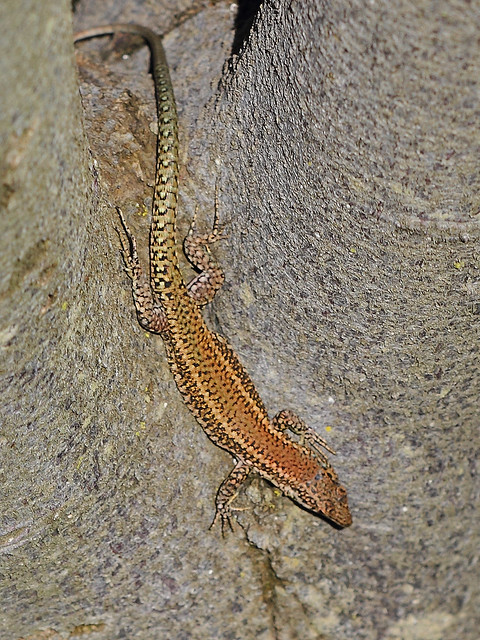
They are excellent climbers too and could be seen climbing tree trunks and through branches, where they were superbly camouflaged.
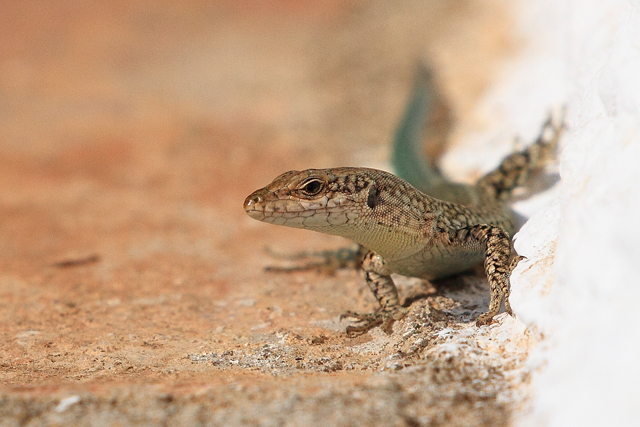
Walking on the paving, along the edge of the wall while hunching up his back and raising his body off the floor. This lizard is alert and ready for action.
On one unfortunate occasion, my mother’s dog ‘Luna’, spotted a lizard and as he made a lightening dash towards the safety of a plant pot, Luna, with her narrow muzzle had probably taken hold of the lizard’s tail and bitten it off! Gruesomely, like some deranged serpent the amputated tail wiggled about for several minutes. Another explanation for the severed tail may be due to the curious fact that Lizards under the threat of being attacked will voluntarily shed their tail, allowing them to escape while the still moving tail distracts the predator. This phenomenon (autotomy) is the result of a localised muscular contraction that breaks a fracture plane that can be found in each of the tail vertebrae. Whilst the tail will re-grow around a newly formed rod of cartilage, the re-grown portion is always shorter than the original.
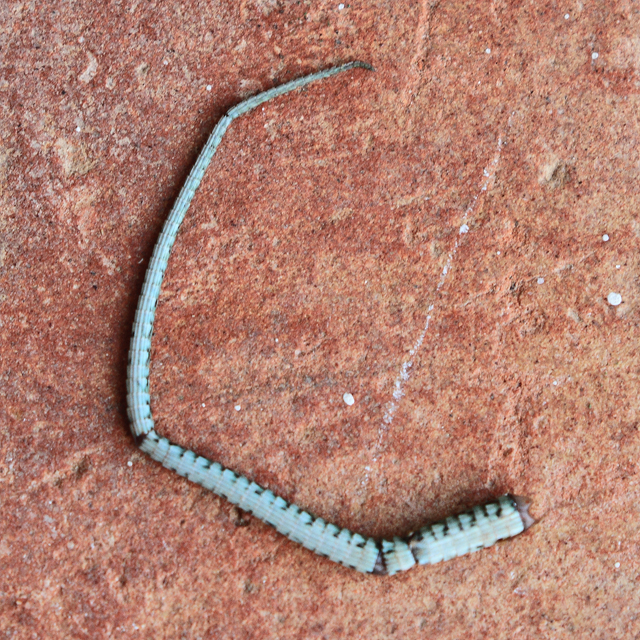
The amputated tail wiggled about for several minutes.

On guard dog duties, Luna may well have been the culprit for the lizard’s amputated tail.
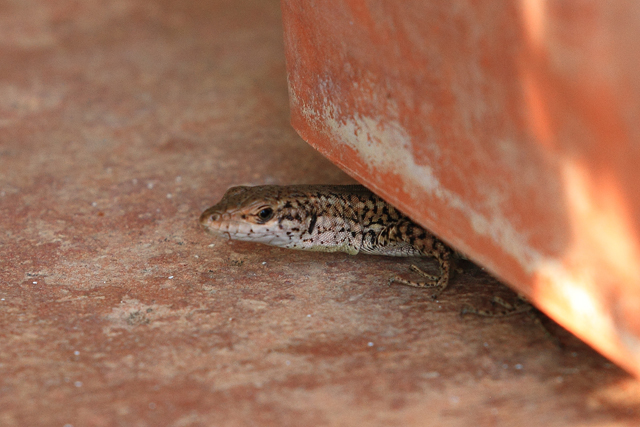
Partially hiding under the safety of a flower pot this lizard may be tail-less but at least he’ll live to fight another day!

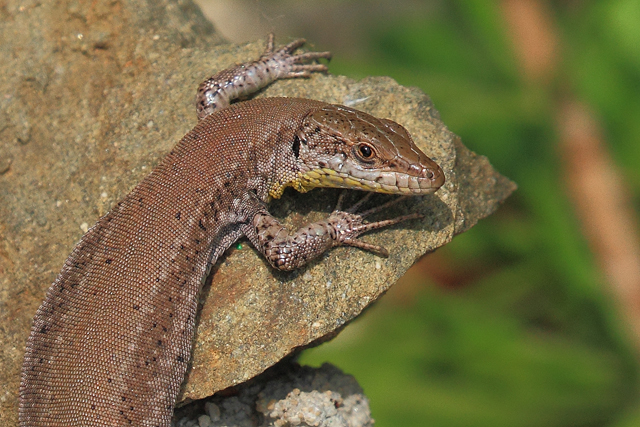
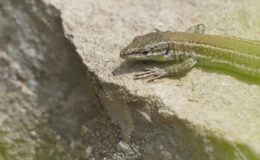
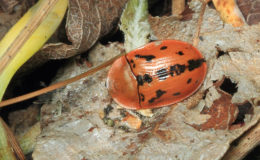
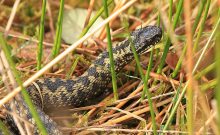
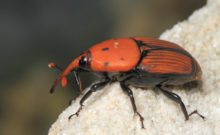
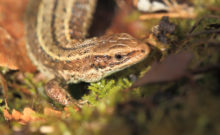
Leave a Comment